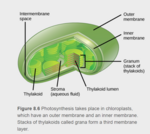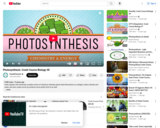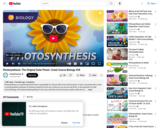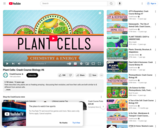
5 Results


This resource is a video abstract of a research paper created by Research Square on behalf of its authors. It provides a synopsis that's easy to understand, and can be used to introduce the topics it covers to students, researchers, and the general public. The video's transcript is also provided in full, with a portion provided below for preview:
"Chloroplasts harness sunlight to power all the processes that help plants grow. Like engines, they must carefully balance their fuel to run efficiently. In plants, that’s the ratio of ATP to NADPH, two forms of fuel produced by photosynthesis. But scientists have long known that ATP/NADPH ratios in chloroplasts fall short of the value required for plants to turn CO₂ into sugars. To find out how plants overcome this imbalance, researchers tracked ATP in Arabidopsis plants in real time using a fluorescent protein sensor. They found that immature chloroplasts in young seedlings imported cytosolic ATP for chloroplast biogenesis, using an abundance of ATP transporter proteins to do the job, but mature chloroplasts downregulated these transporters to minimize ATP importation. Instead of importing ATP to maintain fuel balance, chloroplasts exported NADPH in the form of malate..."
The rest of the transcript, along with a link to the research itself, is available on the resource itself.
- Subject:
- Biology
- Botany
- Genetics
- Life Science
- Material Type:
- Diagram/Illustration
- Reading
- Provider:
- Research Square
- Provider Set:
- Video Bytes
- Date Added:
- 05/18/2022

Hank explains the extremely complex series of reactions whereby plants feed themselves on sunlight, carbon dioxide and water, and also create some by products we're pretty fond of as well.
Chapters:
1) Water
2) Carbon Dioxide
3) Sunlight/Photons
4) Chloroplasts
5) Light Reaction/Light-Dependent
a. Photosystem II
b. Cytochrome Complex
c. ATP Synthase
d. Photosystem I
6) Dark Reactions/Light-Independent
a. Phase 1 - Carbon Fixation
b. Phase 2 - Reduction
c. Phase 3 - Regeneration
Review
- Subject:
- Biology
- Life Science
- Material Type:
- Lecture
- Provider:
- Complexly
- Provider Set:
- Crash Course Biology (2012)
- Date Added:
- 03/19/2012

Photosynthesis is a powerful process that is responsible for some of life’s most vital functions. In fact, consumers like us rely on photosynthetic producers to harness energy from the sun so that we can survive and thrive. In this episode of Crash Course Biology, we’ll explore photosynthesis in two acts, and learn how the process works inside and out.
Chapters:
How Can We Feed the World?
Producers & Photosynthesis
Chloroplasts
The Light-Dependent Reactions
The Calvin Cycle
Carbon Fixation
Review & Credits
Credits
- Subject:
- Biology
- Life Science
- Material Type:
- Lecture
- Provider:
- Complexly
- Provider Set:
- Crash Course Biology
- Date Added:
- 02/02/2024

Hank describes why plants are so freaking amazing - discussing their evolution, and how their cells are both similar to & different from animal cells.
Chapters:
1. Introduction
2. Plant Evolution
3. Eukaryotic vs. Prokaryotic Cells
4. Cellulose and Lignin
5. Plastids and Chloroplasts
6. Central Vacuole
- Subject:
- Biology
- Life Science
- Material Type:
- Lecture
- Provider:
- Complexly
- Provider Set:
- Crash Course Biology (2012)
- Date Added:
- 03/05/2012